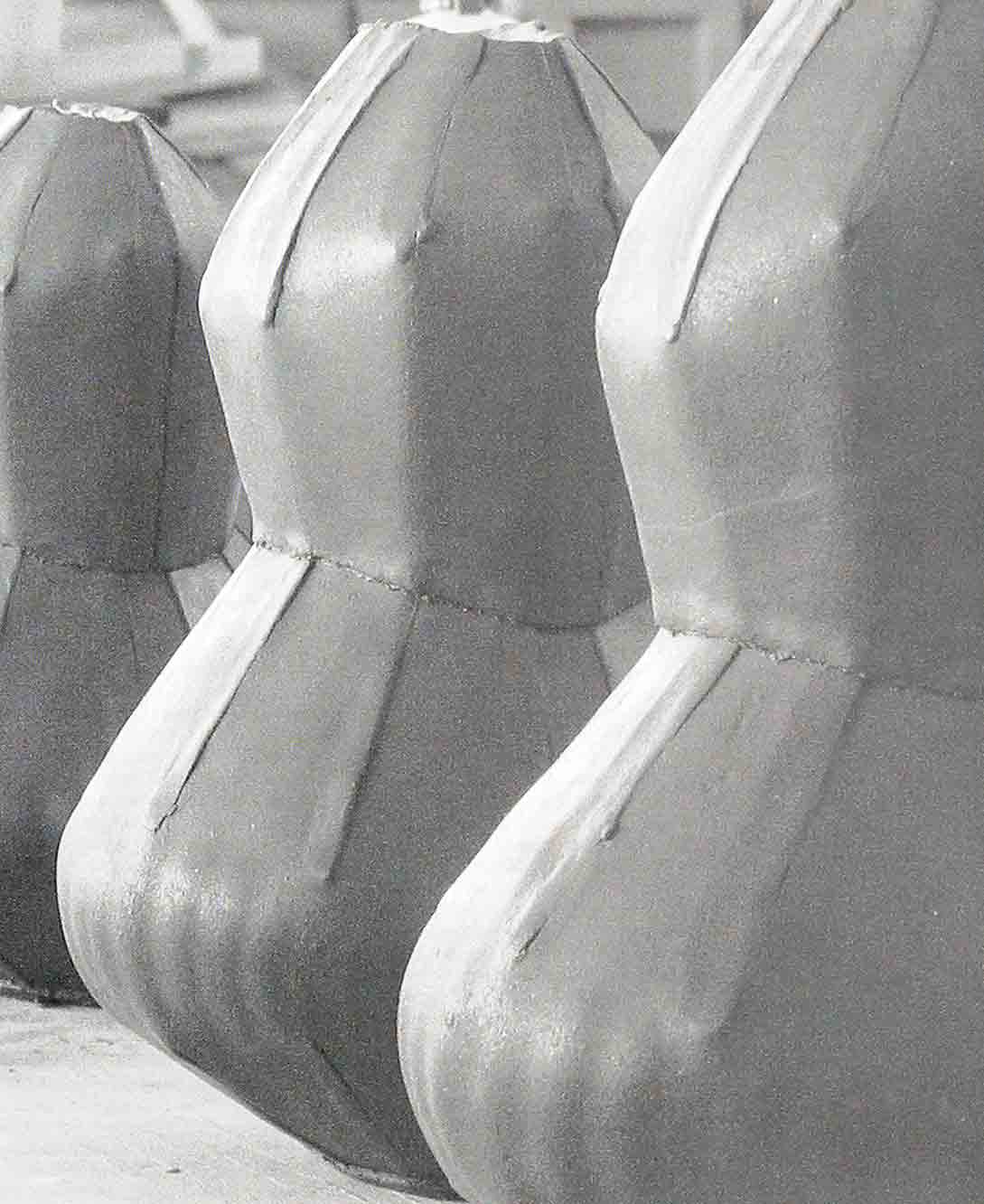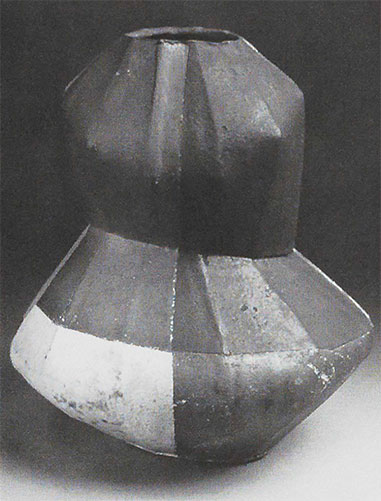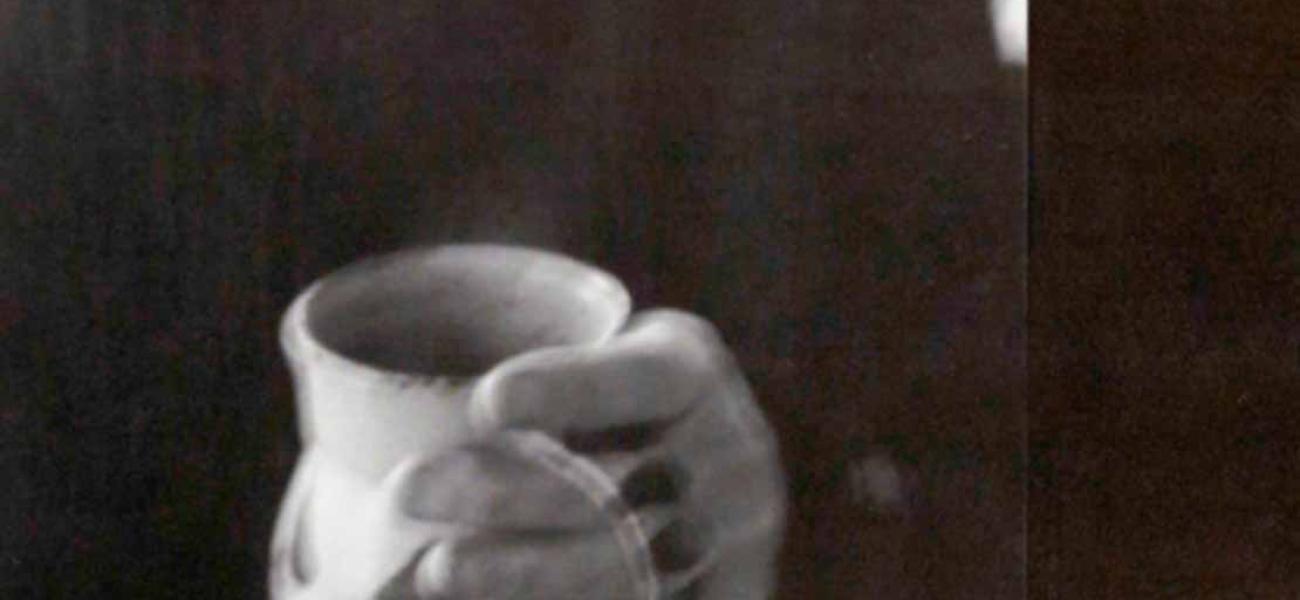Revisiting Function: The Spice of Life
“Just as in music we find that the simpler the theme, the more thorough must be the knowledge of the musician in order to compose acceptable variations thereon. So, in fact in every Art this rule obtains, and the simpler the apparent result – assuming, of course, that such result is really beautiful – the greater the art care knowledge and taste required ... The problem presented is practically one of elimination. To include all that is necessary and eliminate all that is unessential…”1
By any historical standard, those who make functional pots in the twenty-first century do so under circumstances that are very different from those of our predecessors. The spirit of artistic collaboration, eagerly sought by many artists today, was once commonplace within potteries. Pots were produced within a context that few contemporary potters can reasonably imitate. Much has changed. The material needs of our society are amply provided for by industry and business. In the event that we find ourselves in need of dishes, a vase for flowers, or a cup, we are surrounded by advertisements and retail shops that remind us that most of what we wish for is immediately available at a reasonable price. Generally speaking, none of us wants for the essential or ordinary – cups, bowls, vases, and plates. A cursory look at the history of past cultures, which is amply described by surviving pots and shards, reveals that man's need for functional clay objects is nothing short of eternal. Our culture is no exception. However, industry's nearly total assumption of the task of producing these objects has refocused the efforts of contemporary artists working in clay.

Functional handmade pots, at least in Canada and US, are not made by “folk potters,” “unknown craftsmen,” common laborers, or anyone remotely unaware or selfless, and it seems unlikely that they ever will be again. During the past fifty years, the academically trained potter has rapidly become the norm. And for now, an individual artist's effort is most often celebrated and recognized for the uniqueness of individual achievement and vision. We recognize and celebrate the singular voice and, perhaps ironically, it is difficult to imagine anything that is the result of anonymous effort being heralded as meaningful or influential. When we look at the long history of potmaking, strong and influential traditions have come not from isolated individuals but from cultures and communities that made pots, as far as we can tell, anonymously. The expectations for the individual have changed; few seek anonymity, and we no longer work together collectively as part of a community effort.
In light of these changes and conditions, how will our ongoing interest in function and utility continue to grow, develop form, and advance meaning? At least a portion of the answer is our deep respect for the hand's nuance: its sensitivity and the tactile exchange that is participatory and satisfying to both maker and user. The language of clay, hand, and wheel has differentiated man from industrial machine practically, philosophically, and, some would suggest, morally for quite some time. This focus on tactile exchange, however limited, for now continues to differentiate pottery and many other crafts from the “fine” arts. The contemporary potter, with experience acquired in an academic art department, will undoubtedly consider the context, production, meaning, and history of a cup much differently than, for instance, Yanagi's “unknown craftsman” would.
The clay tribe, as it has been called, approaches clay and utility with a utopian verve that comes from personal interactions with truly wonderful pots and wonderful people, and the way that both enrich daily life. The mythologies and rituals of past cultures resulted in collaborative works of wonder infused with symbols of belief and conviction, and with significant cultural iconographies. We spend much time looking at and thinking about what other cultures have made and what it means. The moment we reside in is indeed unique, for we have almost unlimited resources at our disposal to aid and inform our observations, among them museums, galleries, books, periodicals, journals and, of course, the Internet.
We are saturated with images of all kinds. It's a phenomenon completely without precedent. The printed image and the Internet afford visual travel to other times and places with an uncanny ease. As visual artists, what we absorb from these encounters and what we read and retain from images is complex, necessarily incomplete, and, in the absence of deeper study, viewed almost completely out of context. Regardless, we are heirs to a remarkable heritage that spans millennia and whose influence on contemporary work remains profound. However, much of what was once historically relevant has been challenged by a changing world, globalism, and the understandings of science, and diluted by the market forces of consumption and capitalism. Understanding the culture, politics, beliefs, and needs that drove creative work in past cultures is much closer to anthropology than it is to individual studio practice.
A few years ago I began to reflect on ideas surrounding theme and variation. Initially, this questioning didn't begin with clay, pots, or art specifically, but rather with a reflection on some of the broader themes that we all participate in as we journey through life. It's a long and engaging list: sex, religion, children, shelter, race, happiness, health, good, evil, relationships. We each have experiences with these themes and our experiences are at once unique and familiar.

Composers and musicians, especially those associated with the classical repertoire, focus on theme and variation as a matter of course. In this instance, themes are frequently of the "micro" variety, the interpretation and reinterpretation of an established form. Bach is the master of variation, and his Goldberg Variations, originally published in 1741 as an aid for insomnia, have become an enduring theme for musicians past and present. Variations on the Goldberg Variations are tightly structured, focused, highly practiced and deeply nuanced. Thousands of performances complement the hundreds of recordings currently available, and without a doubt there will be others.
But why reinterpret Bach, write more about relationships or, for that matter, make more cups? Norman Bryson's observations resonate: “While complicated tools and technologies are subject to rapid change, simple utensils obey a slow, almost geological rhythm. In stratum upon stratum the archaeology of Western sites unearths endless variation on the same basic ideas of storage jar, oil-lamp, beaker, vase. Such objects belong to the aevum, time which has a beginning but no end.”2
And Douglas Hofstadter, in his book Metamagical Themas, persuasively argues that variation on a theme is the crux of creativity – which is not to say that executing variations is synonymous with creativity. Hofstadter argues, “There is a way that concepts have of slipping from one to another following a quite unpredictable path ... A mind follows its path of least resistance, and it's when it feels easiest that it is most likely being most creative ... Trying harder is not the name of the game: the trick is getting the concept right to begin with, so that making variations is like taking candy from a baby.”3
In addition to being a simple comforting container, the familiar dispenser of early morning coffee and tea, the cup is understood as a largely domestic metaphor, an archetype, commodity, signifier, and symbol. Like familiar phrases to musicians, the cup, to potters and users alike, is a topic – a recognizable theme whose endurance and relevance extend well beyond utility. It is also an object whose context is continually challenged, especially in a post-industrial, post-modem age. The cup's vitality depends on variations filled with meaning and relevance that consider context in both place and time.
Variations sustain our encounters with familiar and ordinary themes, both macro and micro. Without them we don't need to preserve another musical performance, publish another novel or fire another pot.
Clearly, the dimensions of our practice have been refocused – contracted on one hand, expanded on the other – by our awareness of history and the expanding contexts of increasingly complex interactions. Our individual understanding of the present is intensely relevant, and we are obliged to be diligent. For, as Hofstadter suggests, concepts slip in unpredictable ways:
"An American anthropologist visited Japan during the Christmas season and noticed that the retail merchants there had begun to take great interest in the symbolism of Christmas. When he wandered into a large department store in Tokyo, he saw a striking example of this: A Christmas display that prominently featured Santa Claus nailed to a cross."4
Of course, getting the concept right isn't as easy as it sounds. In our time, the right concept is decidedly idiosyncratic and mediated by highly personal perspectives. Yet we seek significance, and we are nothing if not judgmental. As Walter Truett Anderson has observed, “Nobody really believes that everything is equal, because the human mind doesn't work that way: whatever else it's doing, it is always tirelessly, relentlessly, evaluating ... No style dominates. Instead we have endless improvisations on themes; parody and playfulness ... People everywhere similarly combine traditions, borrow rituals and myths. All the world's cultural symbols are now in the public domain.”5
Where do we go from here? Everywhere, because we are able to? Or are we to be constrained, by history and the familiar practices of utility, to carve out ever more nuanced paths of personal growth and individual expression? Contemporary variations on familiar themes abound, and without question, clay objects will continue to play a meaningful role in our culture. The rich and curiously textured context in which we work suggests that rewards lie in deeper explorations.
FOOTNOTES:
- Quote attributed to Alfred Steiglitz in Beauford Delaney's notebook. Beauford Delaney: From New York to Paris. Minneapolis: Minneapolis Institute of Art, 2004.
- Norman Bryson. Looking at the Overlooked. Cambridge: Harvard University Press, 1990, pp. 138-139.
- Douglas R. Hofstadter. Metamagical Themas: Questing for the Essence of Mind and Pattern. Perseus Book, 1985, p. 233.
- Richard Schweder. "Why Do Men Barbecue? And Other Postmodern Ironies of Growing Up in the Decade of Ethnicity." Dedalus Journal, Vol. 122, No. 1, Winter 1993.
- Walter Truett Anderson. The Truth About Truth: Deconfusing and Re-constructing the Postmodern World. New York: Penguin Putnam, 1995, p. 10.


